The Redbone Coonhound German Shepherd mix is a beautiful and unique hybrid breed that combines the traits of two beloved breeds.
The Redbone Coonhound is known for its hunting abilities and distinctive red coat, while the German Shepherd is renowned for intelligence and loyalty. When these two breeds are combined, the result is an intelligent, energetic, fiercely loyal dog to its family.
Whether you’re looking for a loyal companion or a hunting partner, the Redbone Shepherd may be the perfect breed. We will discuss everything you need to know about caring for your mixed breed.
This post covers everything from their physical appearance, personality traits, and unique history to tips on grooming and maintaining their coat, meeting their exercise needs, training strategies, and common health concerns.
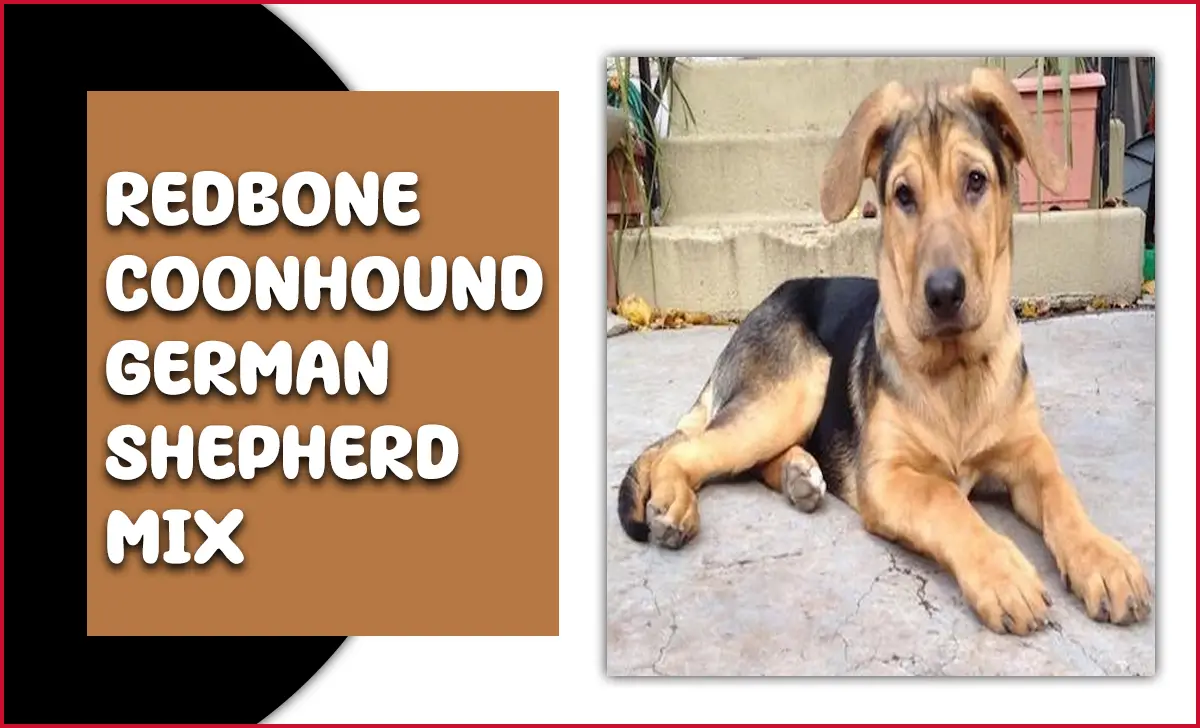
Overview Of The Redbone Coonhound German Shepherd Mix
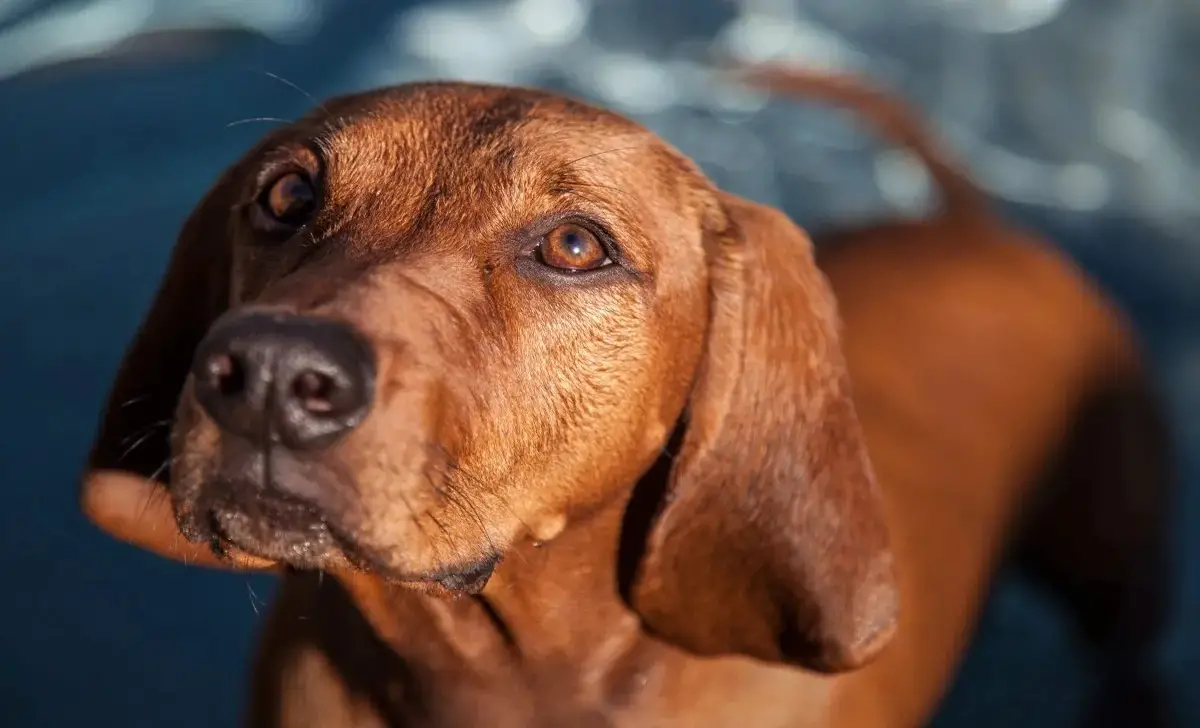
This mix is a unique and beautiful breed that combines the traits of two popular breeds. As the name suggests, this mixed breed comes from a Redbone Coonhound and a German Shepherd.
| Trait | Description |
| Other Names | Red Shepherd, Coonhound Shepherd, Redbone Shepherd, Shepherd Coonhound, German Redbone, Coon Shepherd |
| Origin | Mixed breed from Redbone Coonhound and German Shepherd parents |
| Size | Medium to Large |
| Weight | 50-90 pounds (varies depending on the dominant genes) |
| Height | 22-27 inches at the shoulder |
| Coat Type | Short to medium-length, dense; may vary from smooth to slightly coarse |
| Coat Colors | Varies; can include shades of red, black, tan, and combinations of these colours |
| Lifespan | 10-14 years |
Breed Background
The Redbone Coonhound originated in the United States and was bred by Scottish immigrants in the late 18th century to hunt raccoons and other games. Known for their distinctive red coat and keen scenting ability, they became popular among hunters in the southern regions. The German Shepherd breed was developed in Germany in the late 19th century, initially bred for herding sheep.
Their intelligence, loyalty, and versatility led to their widespread use as working dogs in police, military, and search and rescue roles. This mix likely originated because breeders sought to combine the Redbone’s hunting prowess and the German Shepherd’s intelligence and versatility. Common reasons for breeding this mix include creating a loyal and capable hunting or working
Physical Characteristics
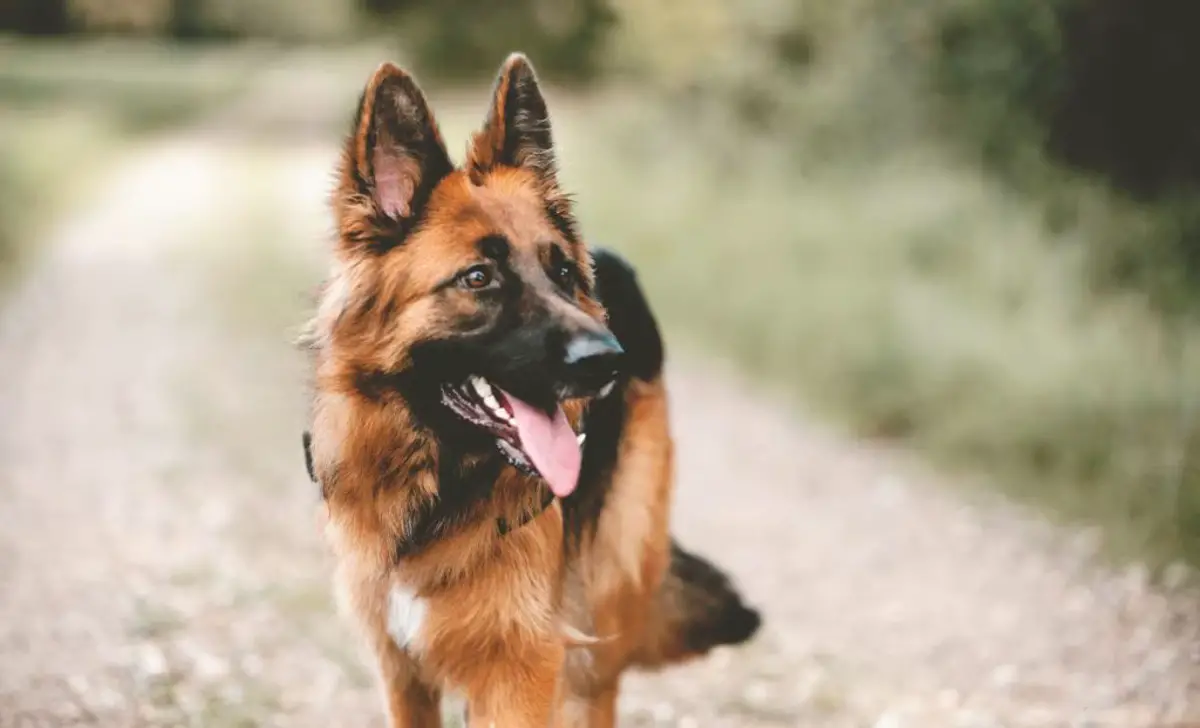
- Size: Medium to large, typically weighing between 50-90 pounds.
- Height: Stands around 22-27 inches tall at the shoulder.
- Build: Muscular and athletic with a strong, well-proportioned body.
- Coat Type: Short to medium length, dense, and may be straight or slightly wavy.
- Coat Color: widely, often including shades of red, black, tan, or a combination of these colours.
- Head: Broad with a well-defined muzzle, combining the features of both breeds.
- Ears: Can be floppy like the Redbone Coonhound or more erect like the German Shepherd, sometimes a mix of both.
- Eyes: Medium-sized, almond-shaped, typically brown or amber.
- Tail: Usually long and may be carried low or with a slight curve.
- Feet: Strong, with well-arched toes and thick pads suitable for various terrains.
- Overall Appearance: A blend of both parent breeds, exhibiting the Redbone Coonhound’s sleekness and grace with the German Shepherd’s robustness and alertness.
Temperament And Behavior
This mix typically inherits the Redbone’s friendly, energetic, and affectionate nature and the German Shepherd’s loyalty, intelligence, and protective instincts. This mix may display strong hunting instincts and excel in scent work due to the Redbone Coonhound ancestry while also being trainable and adaptable like the German Shepherd.
Common behavioural tendencies include a high energy level, a need for mental stimulation, and potential guarding tendencies. Prospective owners should consider the mix’s need for regular exercise, training, and socialization to prevent boredom and behavioural issues. A loving and active household willing to provide ample mental and physical stimulation is ideal for this mix.
Exercise And Activity Needs
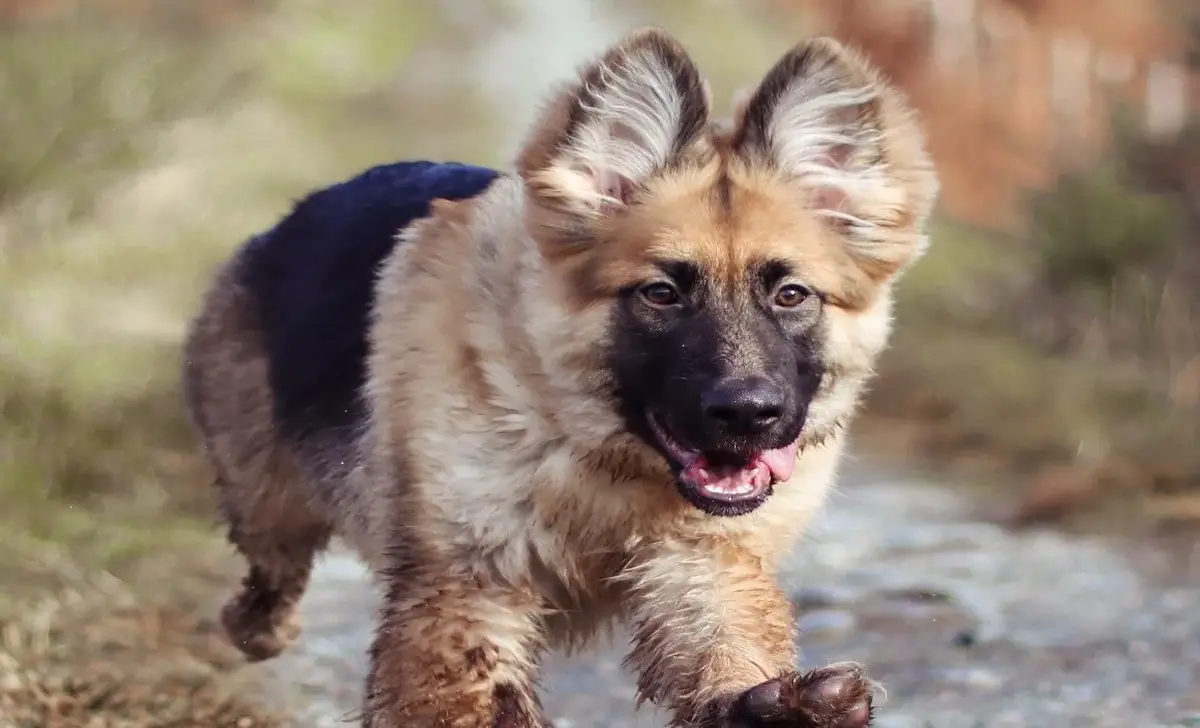
| Category | Details |
| Daily Exercise Requirement | 1.5 to 2 hours |
| Type of Exercise | High-energy activities include running, hiking, and playing fetch. |
| Mental Stimulation | Needs regular mental challenges, such as puzzle toys, obedience training, and agility exercises. |
| Walking | At least 2 long walks (30-60 minutes each) daily. |
| Off-Leash Play | Beneficial if in a secure, fenced area; loves to roam and explore. |
| Training Sessions | Requires consistent, daily training sessions; responds well to positive reinforcement techniques. |
| Indoor Play | Needs indoor activities like tug-of-war or hide-and-seek on days with poor weather. |
This mix requires ample physical exercise and mental stimulation to prevent boredom and ensure their well-being. Mixing activities that fulfil their need for both physical exertion and mental engagement will help keep them happy, healthy, and well-behaved.
Training And Socialization
Training and socialization are vital for this mix to ensure they develop into well-behaved and well-adjusted companions. Effective training techniques include:
- Positive Reinforcement: Use treats and praise to reward desired behaviours like sitting or coming when called.
- Consistency: Maintain consistent commands and expectations to avoid confusion.
- Patience: Mixed breeds may have a blend of traits, so be patient during training sessions.
- Basic Commands: Teach fundamental commands such as sit, stay, come, and heel for better control.
- Leash Training: Proper leash manners are essential due to the breed’s strength and energy.
- Socialization: Introduce the mix to various people, animals, and environments early on to prevent fear or aggression.
Early socialization is equally crucial, exposing them positively to different experiences to prevent behavioural issues. Regular interactions with people, dogs, and environments will help them grow into confident and well-adjusted companions.
Health Considerations Common Health Issues:
- Hip Dysplasia (both breeds)
- Elbow Dysplasia (both breeds)
- Bloat (more common in German Shepherds)
- Progressive Retinal Atrophy (Redbone Coonhounds)
- Ear Infections (Redbone Coonhounds)
Recommended Health Screenings And Preventative Care:
- Hip and elbow evaluations
- Ophthalmic examination for retinal issues
- Regular ear cleaning and check-ups
- Preventative measures against bloat, such as feeding smaller meals and avoiding vigorous exercise after meals
Strategies For Maintaining Overall Health:
- Provide regular exercise to support joint health
- Feed a balanced diet to maintain a healthy weight
- Practice good dental hygiene
- Keep up with vaccinations and parasite prevention
- Regular veterinary check-ups to detect any health issues early
Feeding And Nutrition
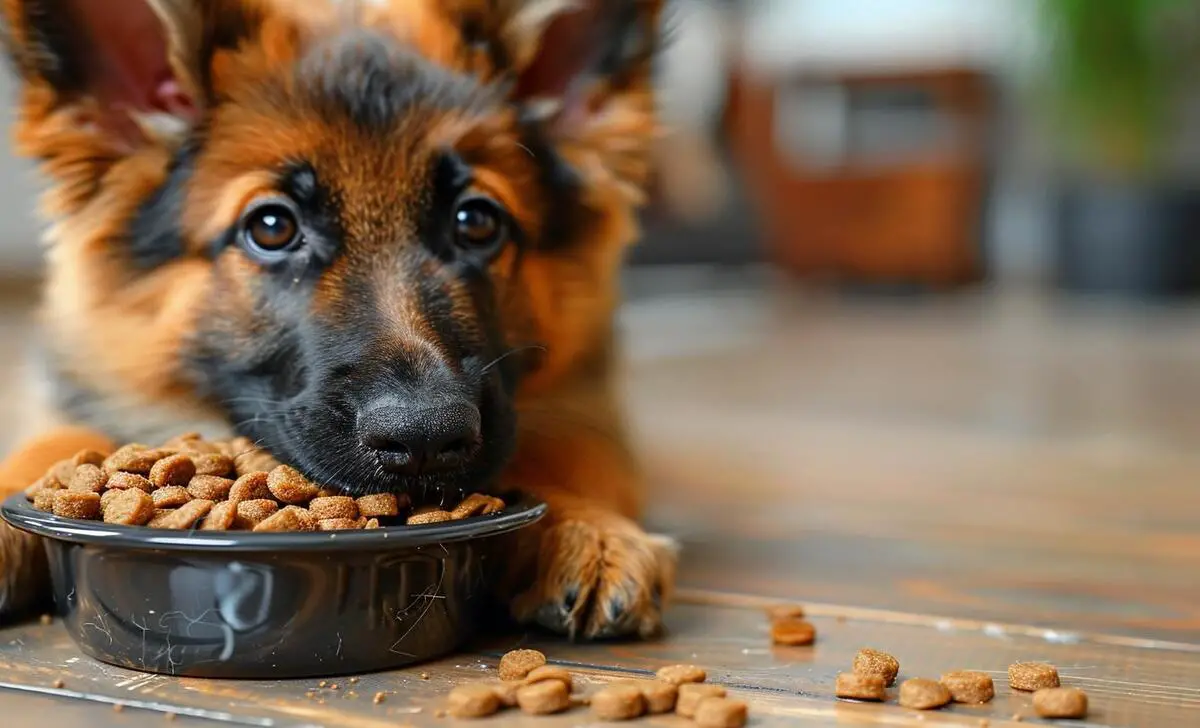
Here’s information on feeding and nutrition for a Red Shepherd:
Dietary Requirements: The dietary needs of a Red Shepherd will depend on factors such as size, age, and activity level. As a larger breed mix, they may require a diet formulated for medium to large-breed dogs. This diet should contain balanced protein, fat, carbohydrates, vitamins, and minerals to support their energy requirements and overall health.
Recommended Feeding Schedules and Portion Sizes: Generally, adult dogs should be fed twice a day, while puppies may require more frequent meals. Portion sizes should be based on the dog’s weight, age, and activity level. Consult with your veterinarian to determine your dog’s appropriate portion sizes and feeding schedule.
Tips for Selecting High-Quality Dog Food and Treats: Look for dog foods that list a high-quality protein source as the first ingredient, and avoid foods with artificial additives or fillers. Opt for reputable brands meeting AAFCO (Association of American Feed Control Officials) standards. Additionally, choose treats made from natural ingredients and avoid those high in sugar or artificial preservatives.
Diet Chart
| Age | Feeding Frequency | Portion Size |
| Puppy (2-6 months) | 3-4 meals/day | 1/2 to 1 cup per meal |
| Puppy (6-12 months) | 2-3 meals/day | 1 to 1 1/2 cups per meal |
| Adult (1-7 years) | 2 meals/day | 2 to 3 cups per day |
| Senior (7+ years) | 1-2 meals/day | 1 1/2 to 2 cups per day |
Feeding Guidelines
A balanced daily meal plan for a dog includes high-quality dry dog food for breakfast, lunch, and dinner, with protein-rich kibble to support muscle development. Mid-morning and afternoon snacks consist of fresh fruits or vegetables, such as apple slices or carrot sticks, and lean protein like cooked chicken or turkey, providing essential vitamins, minerals, and energy.
An evening snack of plain yoghurt or cottage cheese supports digestive health and adds additional protein. Before bed, a small treat or chew toy can satisfy nighttime cravings and promote dental health without adding excessive calories.
Grooming And Maintenance
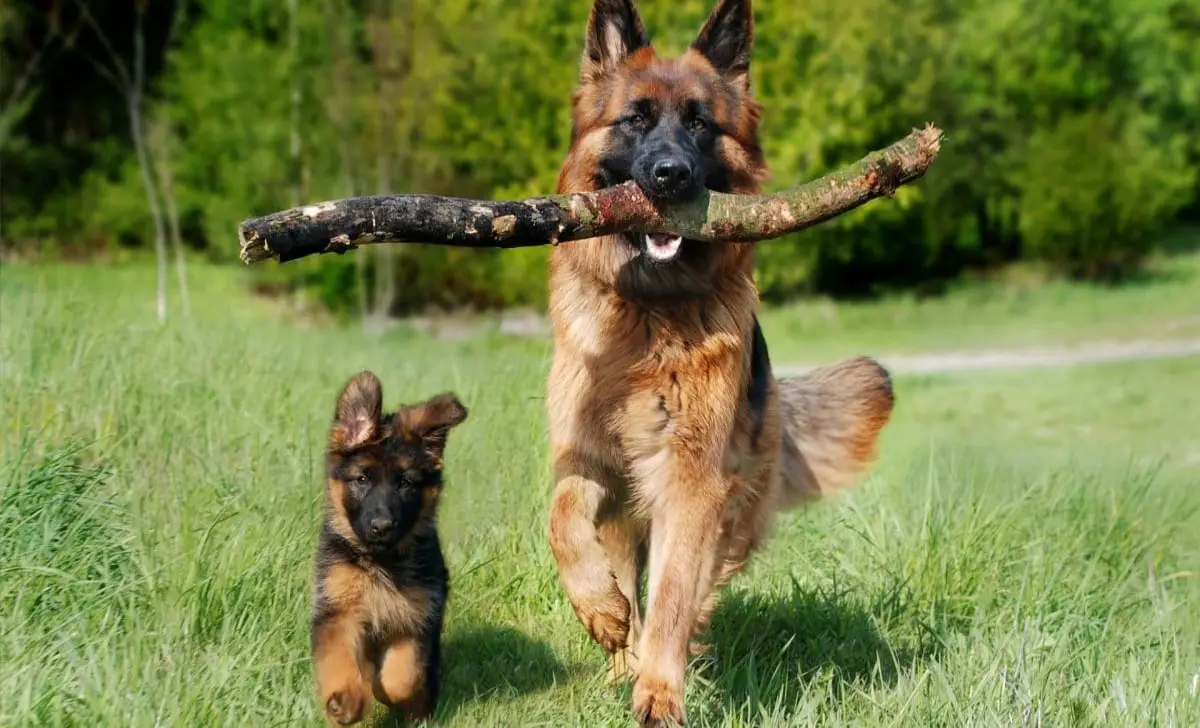
Here’s the information on grooming and maintenance for a Red Shepherd:
Coat Care
Brush the coat of your Red Shepherd at least 2-3 times a week to remove loose hair and prevent matting. Use a slicker brush or a grooming mitt to reach the undercoat.
Ear Cleaning
Check and clean your dog’s ears weekly to prevent wax buildup and infections. Use a veterinarian-approved ear-cleaning solution and cotton balls to gently wipe the inner ear.
Dental Care
Brush your dog’s teeth 2-3 times a week with a dog-specific toothbrush and toothpaste to prevent tartar buildup and dental issues. Dental chews and toys can also help maintain oral health.
Nail Trimming
Trim your dog’s nails every 2-4 weeks to prevent overgrowth and discomfort. Use a dog nail clipper and be cautious not to cut into the quick, which can cause bleeding and pain.
Overall Grooming Routine
Bathe your Red Shepherd as needed, typically every 6-8 weeks or when they become dirty or smelly. Use a dog-specific shampoo and conditioner to maintain a healthy coat.
Interesting Facts About This Mix
The Red Shepherd is a unique and fascinating hybrid breed that combines the traits of both the Redbone Coonhound and the German Shepherd. Here are some interesting facts about this distinctive mix:
- Singing Sensation: Known for their unique howling, they can sometimes sound like they’re singing along to music or trying to mimic human speech.
- Sofa Hoggers: Despite their size, they believe they’re lap dogs and will try to snuggle on your lap or take over the couch.
- Escape Artists: With their Coonhound nose and Shepherd smarts, they can figure out how to open gates, doors, and even cabinets in search of treats.
- Shadow Companions: They follow you everywhere, earning the nickname “Velcro dogs,” because they stick to you like glue.
- Food Enthusiasts: Their love for food is so strong, they’ll sit and stare at you with puppy eyes, hoping for a bite of whatever you’re eating.
- Playful Paws: They have a quirky habit of “boxing” with their paws during playtime, which can be hilarious to watch.
- Goofy Grins: They often flash goofy, wide-mouthed grins that make them look like they’re always smiling and happy.
Conclusion
The Coonhound Shepherd is a beautiful and unique breed that combines the best traits of both breeds. They have much to offer as pets, from their physical characteristics to their personality traits.
However, taking good care of your pet is important, so provide proper nutrition, grooming, exercise, and training. To ensure your pet stays healthy and happy, watch for common health concerns and take preventative measures to keep them at bay.
This mix is known for its loyalty, intelligence, and athletic abilities, making it a great companion for active families. We hope this has provided valuable insights into the Redbone Shepherd and has helped you decide whether this breed is right for you.
Frequently Asked Questions
1.How Much Does A Redbone Coonhound Cost?
A Redbone Coonhound typically ranges from $300 to $800, depending on factors such as breeder reputation, lineage, and location. Additional expenses like vaccinations, grooming, and training should also be considered when budgeting for a new pet.
2.What Are The Best Activities For A Redbone Shepherd?
Redbone Shepherds are energetic, intelligent dogs that thrive on physical and mental stimulation. Their best activities include long walks or hikes, agility training, obedience training, puzzle toys, scent work, and interactive games like fetch or frisbee.
These activities help keep them mentally engaged and physically active, preventing boredom and potential behaviour issues. Additionally, they enjoy activities that tap into their natural hunting instincts, such as tracking or nose work.
3.What Are The Common Exercise Requirements For A German Redbone?
A German Redbone will likely require regular exercise such as long walks, runs, and playtime to meet their high energy levels. Mental stimulation through activities like training, puzzle toys, or scent games can also help keep them engaged and prevent boredom. Consistent exercise and mental stimulation are important for this mixed breed to maintain their physical and mental well-being.
4.What Is A German Shepherd And Hound Mix Called?
A German shepherd and hound mix is called a Coon Shepherd. This breed is known for its loyalty, intelligence, and energy. Physical traits can include a muscular build and floppy ears from both breeds.
5.What Is The Lifespan Of A German Shepherd Hound Mix?
The lifespan of a German Shepherd Hound mix can vary based on genetics and overall health. However, they typically live for around 10-13 years. Proper care, including a nutritious diet and regular exercise, can help extend their lifespan.
6.Is A Shepherd-Hound Mix A Good Dog?
Yes, a Coon Shepherd can make a great pet for the right owner. They are intelligent, loyal, and energetic dogs that thrive with proper training and socialization.
7.What Breeds Mix Coonhounds?
Coonhounds come in various types, including Redbone and Black Tan Coonhound. While it is possible to mix coonhounds with other breeds, such as German Shepherds or Labrador Retrievers, the resulting mixed breed may vary in appearance and temperament.
8.What Is This German Shepherd Coonhound Mix Personality Like?
The Coon Shepherd is a highly intelligent and active breed that loves to be around people. They are loyal, playful, and good with children, making them an excellent family addition.
